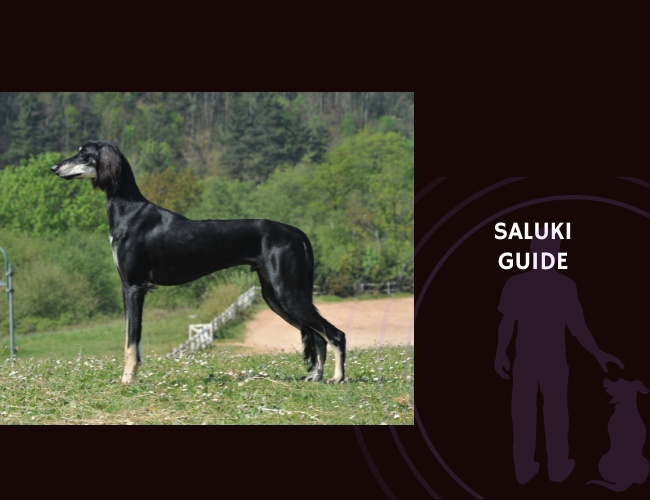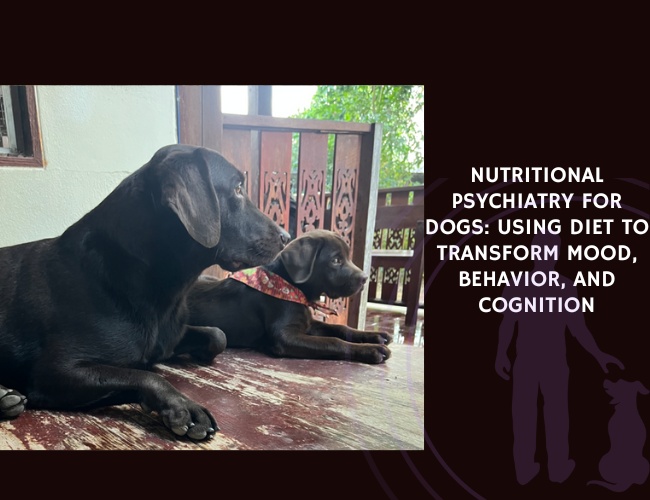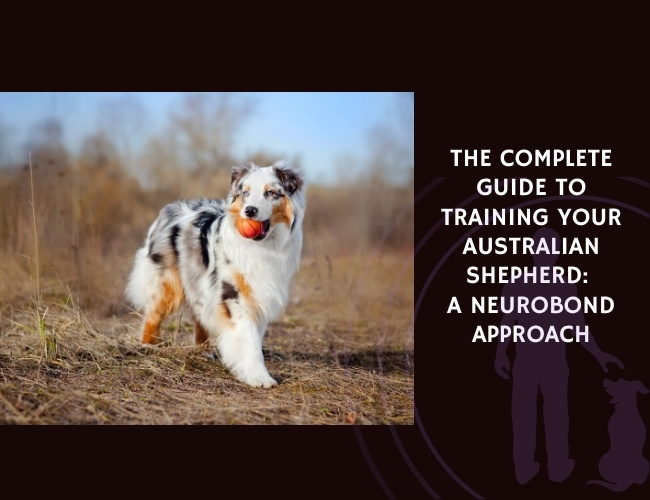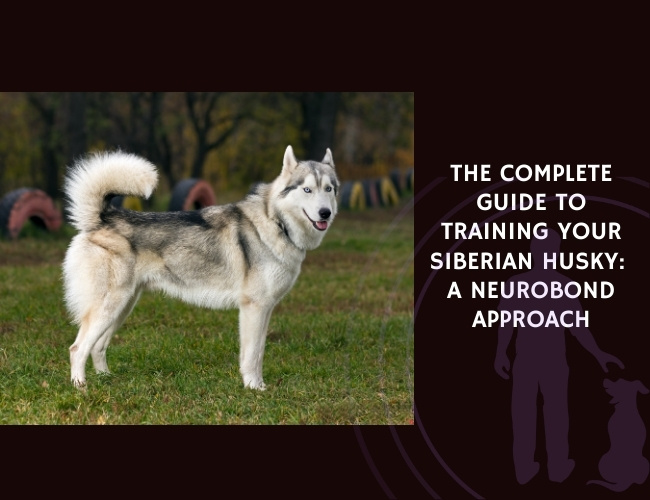Introduction: Meeting the Living Antiquity
When you first encounter a Saluki, you might notice their ethereal grace—a quality that has captivated humans for over 6,000 years. These elegant sighthounds, often called “living antiquities,” carry within their slender frames the stories of ancient civilizations, from the fertile valleys of Mesopotamia to the windswept deserts traveled by Bedouin nomads. Your journey with a Saluki isn’t just about welcoming a pet into your home; it’s about becoming the guardian of a piece of living history.
The Saluki occupies a unique position among dog breeds, holding the distinction of being perhaps the oldest known breed of domesticated dog. In Middle Eastern cultures where ordinary dogs are considered “unclean,” the Saluki alone is permitted into the tents of nomads, sharing their lives as honored companions rather than mere animals. This special status speaks volumes about the breed’s character—refined, dignified, and deeply bonded to their human families.
Let us guide you through understanding these remarkable hounds, whose quiet exterior masks the heart of a born hunter and whose sensitive nature requires a special kind of owner. Whether you’re considering adding a Saluki to your family or simply want to understand these fascinating creatures better, this comprehensive guide will help you appreciate what makes the Saluki truly extraordinary. 🐾
Character & Behaviour: Understanding Your Saluki’s Ancient Soul
The Heritage That Shapes Them
Did you know that your Saluki’s ancestors were bred to chase gazelles across the harsh terrain of the Fertile Crescent? This historical role has shaped every aspect of their character. These dogs aren’t as fragile as their slender build might suggest—they’re endurance athletes capable of running 30-35 miles per hour, with some breeders claiming speeds approaching 50 miles per hour. This incredible athleticism isn’t just about speed; Salukis differ from most sighthounds in their ability to maintain these speeds over remarkably long distances.
Unlike Greyhounds, which typically race over distances ranging from 250 meters to 900 meters, Salukis traditionally race over 2-2.5 kilometer courses. This endurance stems from their adaptation to the nomadic lifestyle of the Bedouin people, where they needed to keep pace with their human companions across vast desert expanses. Understanding this heritage helps explain many of the behaviors you’ll observe in your modern Saluki.
The Saluki Temperament: Quiet Dignity Meets Devoted Companion
The Reserved Aristocrat Your Saluki’s temperament reflects centuries of selective breeding for independence and dignity. They tend to be quiet and reserved, offering what we might call “understated affection.” This isn’t a breed that will overwhelm you with exuberant greetings or demand constant attention. Instead, they show their love through quiet presence—they’ll relish sitting by your side rather than on your lap.
This reserved nature extends to their interactions with strangers. You might notice your Saluki maintaining a respectful distance from unfamiliar people, exhibiting what some mistake for shyness but is actually their natural aloofness. They’re decidedly one-family dogs, forming deep bonds with their household while remaining politely distant with visitors.
Emotional Sensitivity and Family Bonds Despite their independent streak, Salukis are remarkably sensitive dogs who thrive on routine and consistency. They form incredibly deep bonds with their human families, though they express this devotion differently than more demonstrative breeds. Your Saluki won’t shower you with kisses or bounce with excitement, but their loyalty runs deep—they’re the type of companion who will quietly follow you from room to room, content simply to be near you.
This sensitivity means they’re particularly attuned to the emotional atmosphere of their home. Tension, loud voices, or chaotic environments can cause significant stress for these gentle souls. In fact, that quiet personality can be deceiving—Salukis are prone to separation anxiety and other stress-related issues, sometimes even developing psychosomatic illnesses when under extreme pressure.
Intelligence and the Independent Thinker
Problem-Solving on Their Terms Your Saluki possesses considerable intelligence, but it’s paired with an independent nature that can appear as stubbornness. They’re perfectly capable of understanding your commands—they might just choose to ignore them if something more interesting catches their attention. This isn’t defiance in the traditional sense; it’s the manifestation of thousands of years of breeding for independent decision-making in the field.
Their cognitive abilities are particularly evident in their exceptional visual tracking skills. As sighthounds, they differ from the average canine because they innately hunt by sight rather than scent. This means your Saluki processes visual information with remarkable speed and accuracy, a skill that served their ancestors well when tracking swift prey across open terrain.
The Prey Drive Reality It’s crucial to understand that beneath your Saluki’s calm demeanor lies an intense prey drive that can override everything else. When they spot something they identify as prey—whether it’s a squirrel, cat, or plastic bag blowing in the wind—most unleashed Salukis will ignore any commands and bound after it with single-minded determination. This isn’t disobedience; it’s hardwired instinct that’s virtually impossible to train away completely.
This prey drive means you’ll need to remain vigilant during walks and ensure your property is securely fenced. Even the most well-trained Saluki should never be trusted off-leash in an unfenced area, as their hunting instincts can kick in without warning. 🧡
Training & Education: Nurturing Your Saluki’s Potential
Early Socialization: Building Confidence in Your Sensitive Hound
The Critical Window Early and consistent socialization is absolutely essential for helping your Saluki develop into a well-adjusted adult. The period between 8 and 16 weeks is particularly crucial—this is when you’ll want to expose your puppy to a variety of experiences, people, and environments. Remember, your Saluki’s natural wariness around strangers isn’t aggression; it’s their inherent reserve that needs gentle guidance to ensure it doesn’t develop into fearfulness.
During this critical period, focus on positive experiences rather than overwhelming exposure. Short, pleasant encounters with different people, calm dogs, and various environments will help build your Saluki’s confidence. You might notice they observe more than interact—this is perfectly normal for the breed. They’re processing information in their own way, and forcing interaction can be counterproductive.
Ongoing Socialization Needs Socialization doesn’t end after puppyhood. Your Saluki will benefit from continued exposure to new experiences throughout their life, though always at a pace that respects their sensitive nature. Regular visits to quiet parks, calm playgroups with familiar dogs, and controlled introductions to new people will help maintain their social skills without overwhelming them.
Training Philosophy: Negotiation Over Domination
Understanding the Saluki Mindset Training a Saluki requires a fundamental shift in thinking if you’re used to more eager-to-please breeds. These dogs have what many describe as a “cat-like attitude” toward training—they often seem to think obedience exercises are beneath their dignity. You can negotiate with a Saluki, but you cannot bully them. Attempting to force compliance will only activate their formidable stubborn streak.
Positive reinforcement is the only effective approach with this breed. They respond best to rewards, praise, and patience, though even then, they’ll perform commands on their own terms. Think of training as a partnership where you’re proposing ideas rather than issuing orders. Your Saluki might understand “sit” perfectly well but choose to consider whether sitting is really necessary at that particular moment.
Basic Obedience: Setting Realistic Expectations You can begin teaching basic obedience to your Saluki as early as eight weeks old. Commands like sit, stay, down, and eventually heel are good starting points, but remember that “good” is relative with this breed. While they can learn these behaviors, they lack the strong desire to please that makes training easier with other breeds. Success comes from making training interesting and rewarding enough that your Saluki decides cooperation is worthwhile.
Keep training sessions short—5 to 10 minutes maximum—as Salukis quickly lose interest in repetitive activities. Vary your training locations and rewards to maintain engagement, and always end on a positive note, even if that means settling for a less-than-perfect performance.
The Recall Challenge: Managing Expectations
The 100% Myth Let’s address the elephant in the room: many experienced Saluki owners will tell you that achieving 100% reliable recall with this breed is virtually impossible. This isn’t a failure of training or a reflection on your skills as an owner—it’s simply the reality of owning a sighthound with thousands of years of independent hunting heritage.
Even Salukis with excellent recall training in controlled environments may completely ignore you when their prey drive activates. The sight of a running rabbit, deer, or even a leaf blowing in an interesting way can trigger instincts that override any training. This means that no matter how perfect your Saluki’s recall might be in your backyard or training class, it should never be relied upon in open areas.
Building the Best Recall Possible Despite these limitations, recall training remains crucial for safety and communication. Start recall training in secure, enclosed areas with minimal distractions. Use high-value rewards—think pieces of roasted chicken or freeze-dried liver rather than regular kibble. Make yourself more interesting than the environment by using excited voice tones, running away to trigger their chase instinct toward you, or incorporating play into recall exercises.
Practice recall daily but in short bursts to prevent boredom. The goal isn’t perfection but rather building a strong enough recall that might work in emergency situations when other instincts aren’t fully engaged. Always maintain realistic expectations and never test your Saluki’s recall in unsafe environments.
Specialized Activities: Honoring Their Heritage
Lure Coursing: The Perfect Outlet Lure coursing offers your Saluki the perfect opportunity to exercise their natural abilities in a controlled environment. This sport involves chasing a mechanical lure around a course, allowing them to demonstrate their incredible speed, agility, and enthusiasm for the chase. Performance is judged on multiple factors including speed, agility, endurance, ability to follow the lure through turns and obstacles, and overall enthusiasm.
Participating in lure coursing provides numerous benefits beyond physical exercise. It satisfies your Saluki’s deep-seated need to chase, potentially reducing problematic behaviors stemming from frustrated hunting instincts. It also offers mental stimulation and can boost confidence in more reserved individuals.
Agility and Trick Training: Surprising Possibilities While Salukis might not be the first breed that comes to mind for agility or trick training, they can excel in these activities when approached correctly. The fast-paced nature of agility, with its jumping, running, and climbing elements, appeals to their athletic nature. Some Salukis have even achieved notable successes, qualifying for prestigious competitions like Crufts in obedience and becoming the world’s first Salukis to hold Novice Masters Trick Dog Titles.
The key to success in these activities is making them fun rather than work. Use play and high-value rewards, keep sessions short and varied, and respect your Saluki’s need for autonomy by allowing them some choice in activities. Never force participation—a willing Saluki is far more likely to succeed than one being coerced.

Nutritional Recommendations: Fueling Your Desert Athlete
Understanding Your Saluki’s Unique Dietary Needs
The Lean Machine’s Fuel Requirements Your Saluki’s nutritional needs reflect their unique physiology—a body built for speed and endurance with minimal body fat and a high ratio of fast-twitch muscle fibers. This lean build means they require a carefully balanced diet that provides sustained energy without adding unnecessary weight. The best diet for your Saluki should be nutritionally balanced according to their life stage and energy needs, typically including high-quality proteins, healthy fats, vitamins, minerals, and fiber from vegetables and berries.
Adult Salukis generally thrive on diets with moderate protein content (around 18-24%) and moderate fat content (around 8-15%). These levels provide necessary energy for their active lifestyle without overloading their sensitive digestive systems. Remember, maintaining a healthy weight is crucial for your Saluki’s wellbeing—their naturally lean build means excess weight can quickly stress their joints and cardiovascular system.
Portion Control and Feeding Schedules Adult Salukis typically need about three cups of high-quality dry food per day, divided into two meals. However, this is just a starting point—your individual dog’s needs will vary based on age, activity level, and metabolism. You’ll need to monitor your Saluki’s body condition regularly, adjusting portions to maintain their characteristic lean, athletic build.
Establishing a consistent feeding schedule is essential. Most owners find that feeding twice daily helps maintain steady energy levels and prevents the blood sugar fluctuations that can affect these sensitive dogs. Feed at the same times each day to support your Saluki’s love of routine and predictability.
Life Stage Nutrition: From Puppy to Senior
Puppy Power: Building a Strong Foundation During their first year, your Saluki puppy requires specialized nutrition to support their rapid growth and development. Choose a high-quality puppy food designed for active breeds, ensuring it contains a minimum of 22% protein and 8% fat on a dry matter basis. These higher levels support proper muscle development and provide energy for their naturally active puppy behavior.
Saluki puppies should eat three to four small meals daily until around six months old. A typical puppy might consume about 1¾ cups per day, divided across these meals. This frequent feeding schedule helps maintain stable blood sugar levels and supports their developing digestive system. By 12 to 18 months, you can transition to adult food and reduce meals to twice daily.
Adult Maintenance: Sustained Performance Once your Saluki reaches adulthood, their nutritional focus shifts from growth to maintenance and performance. Look for foods specifically formulated for high-energy breeds that consider their lean build and exercise requirements. Quality proteins should come from identifiable meat sources, while carbohydrates should provide sustained energy without causing weight gain.
Some Salukis may develop food sensitivities or allergies as adults. Watch for signs like digestive upset, skin problems, or ear infections that might indicate dietary issues. If problems arise, consult with your veterinarian about elimination diets or specialized formulations that might better suit your dog’s needs.
Special Dietary Considerations
Preventing Bloat: A Life-Saving Approach Due to their deep chest, Salukis face an increased risk of bloat (gastric dilatation-volvulus), a potentially life-threatening condition where the stomach fills with gas and potentially twists. Your feeding practices play a crucial role in prevention. Never feed one large meal—always divide daily rations into two or more smaller meals. Avoid vigorous exercise for at least an hour before and after meals, and consider using slow-feed bowls if your Saluki tends to eat quickly.
Some owners elevate food bowls to reduce air intake during eating, though research on this practice remains mixed. What’s most important is maintaining consistent meal times, avoiding sudden diet changes, and monitoring your Saluki for signs of digestive distress after eating.
Supporting Skin and Coat Health Your Saluki’s relatively thin and sensitive skin requires nutritional support from within. Omega-3 and omega-6 fatty acids play crucial roles in maintaining skin health and that silky coat. Look for foods that include fish oil or flaxseed, or consider supplementation if your dog’s diet lacks these essential nutrients.
During mealtimes, some Saluki owners use snoods—fabric covers for their ears and neck—to keep those elegant long ears out of food bowls. This practical accessory helps maintain coat cleanliness and prevents ear infections that can develop from food contamination.
Health Concerns: Protecting Your Saluki’s Wellbeing
Cardiac Conditions: The Breed’s Primary Concern
Understanding Dilated Cardiomyopathy (DCM) Perhaps the most significant health concern facing Salukis is dilated cardiomyopathy (DCM), a condition where the heart becomes enlarged, thin, and weak, unable to effectively pump blood throughout the body. The statistics are sobering—it’s estimated that around 30% of Salukis develop cardiac conditions during their lifetime, compared to just 1% in other breeds. This dramatic difference underscores the importance of cardiac health monitoring in your Saluki.
DCM often develops silently, with symptoms only becoming apparent once the disease has progressed significantly. Early signs might include decreased exercise tolerance, coughing (especially at night), rapid breathing, or fainting episodes. Regular veterinary check-ups including cardiac auscultation and, ideally, periodic echocardiograms can help detect problems before they become life-threatening.
Proactive Cardiac Care While you cannot entirely prevent DCM, you can take steps to support your Saluki’s heart health. Maintain appropriate body weight to reduce cardiac workload, ensure regular but not excessive exercise, and consider supplements like taurine and L-carnitine that may support heart function. Most importantly, establish a relationship with a veterinarian familiar with sighthound health issues who can provide appropriate monitoring throughout your dog’s life.
The good news is that breeders have made significant progress in reducing DCM incidence since the 1990s when it was even more prevalent. When selecting a Saluki puppy, inquire about cardiac testing in the breeding lines and choose breeders who prioritize heart health in their breeding programs.
Orthopedic Considerations
Osteosarcoma: A Serious Concern Osteosarcoma, an aggressive bone cancer, represents another significant health risk for Salukis. This painful condition typically affects the long bones of the legs, causing lameness, swelling, and lethargy. The tumor’s rapid growth means early detection and intervention are crucial for maintaining quality of life.
Watch for any signs of lameness that don’t resolve with rest, swelling around bone areas, or reluctance to bear weight on a limb. While osteosarcoma typically affects middle-aged to older dogs, younger animals aren’t immune. Regular veterinary examinations can help detect problems early, though the aggressive nature of this cancer means treatment options may be limited.
Hip and Joint Health Fortunately, Salukis have one of the lowest incidences of hip dysplasia among dog breeds, ranking joint lowest in British Veterinary Association surveys with an average score of just 5 points (where 0 is perfect and 106 is severe). However, they may still experience other orthopedic issues like luxating patellas. Monitor your Saluki for signs of lameness, difficulty rising, or changes in gait that might indicate joint problems.
Supporting joint health throughout your Saluki’s life involves maintaining appropriate weight, providing regular but not excessive exercise, and considering joint supplements as they age. The breed’s natural leanness actually works in their favor here—excess weight is one of the primary contributors to joint problems in dogs.
Eye Health: Preserving Vision
Progressive Retinal Atrophy (PRA) Salukis face increased risk for Progressive Retinal Atrophy, an inherited condition where the eyes are genetically programmed for gradual vision loss. This degenerative disease isn’t painful and often goes unnoticed in early stages. The first signs typically include night blindness—you might notice your Saluki becoming hesitant in dim lighting or bumping into objects at dusk.
As PRA progresses, you’ll observe dilated pupils that don’t respond normally to light, increased clumsiness, and eventually complete vision loss. While there’s no cure, dogs adapt remarkably well to blindness, especially in familiar environments. Genetic testing can identify carriers and affected dogs, making this an important consideration for breeding programs.
Other Ocular Concerns Beyond PRA, Salukis may develop cataracts and glaucoma. Regular eye examinations by your veterinarian can detect these conditions early when treatment is most effective. Watch for signs like cloudiness in the eyes, excessive tearing, squinting, or pawing at the face, which might indicate eye discomfort requiring veterinary attention.
Neurological and Autoimmune Conditions
Saluki Encephalopathy: A Breed-Specific Concern Saluki Encephalopathy (SE) is a recessive genetic neurological disease specific to the breed. Symptoms typically appear within the first 10 weeks of life and include seizures, abnormal gait, and unusual behavior. This devastating condition highlights the importance of genetic testing and responsible breeding practices.
Another neurological concern is neuronal ceroid lipofuscinosis, which causes accumulation of storage material in the brain and eyes. This condition typically manifests between 1-2 years of age with symptoms including blindness, disorientation, and seizures. While there’s no cure, genetic testing can identify carriers to prevent affected puppies from being born.
Maintaining Genetic Diversity The good news is that Salukis generally enjoy robust health and longevity for a large breed, with average lifespans of 13 years and some individuals reaching 17 years. The breed maintains reasonable genetic diversity with a coefficient of inbreeding around 9.7%, though continued attention to genetic health in breeding programs remains important for the breed’s future. 🐾
Graceful. Enduring. Devoted.
Heritage drives resilience. Bred to chase gazelles across vast deserts, Salukis combine speed with extraordinary endurance. Their athleticism isn’t fragility—it’s the ancient strength of nomadic survival woven into elegant form.
Dignity defines affection. Rather than overwhelming displays, Salukis offer quiet companionship and understated loyalty. Their reserved greetings reflect aristocratic breeding, showing love through calm presence rather than constant demand.
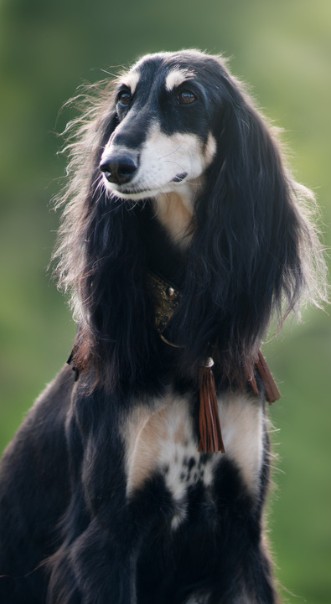
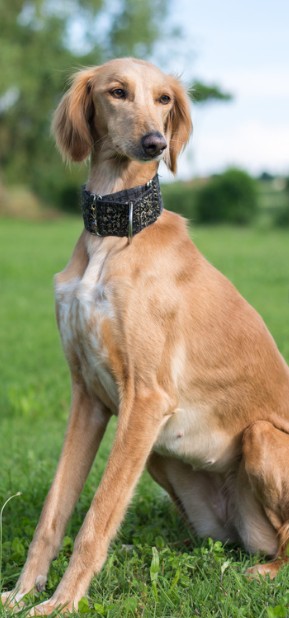
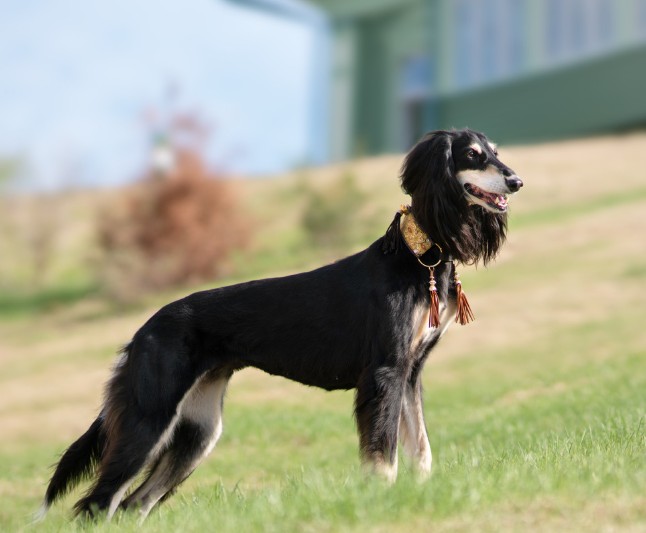
Sensitivity deepens bonds. Beneath their independence lies emotional attunement to family life. They form profound attachments within their household, balancing aloofness toward strangers with unwavering devotion at home.
Lifestyle & Environment: Creating the Perfect Saluki Home
Exercise Requirements: Balancing Speed and Serenity
Daily Exercise Needs Your adult Saluki requires 90 minutes or more of dedicated exercise each day, but this doesn’t mean constant activity. These dogs are sprinters rather than marathon runners in terms of their exercise preferences. They need regular opportunities to vent their energy through all-out galloping a few times a week, followed by long periods of rest and relaxation.
A typical exercise routine might include a 30-45 minute morning walk, an afternoon play session in a securely fenced area where they can run freely, and an evening stroll. The key is providing opportunities for both types of exercise—the sustained, moderate activity of walks and the explosive, high-intensity running that satisfies their sighthound nature.
The Importance of Free Running While daily walks are essential, they alone won’t satisfy your Saluki’s exercise needs. These dogs must have regular opportunities for free running in secure areas. Without this outlet, you might notice increased restlessness, destructive behavior, or signs of frustration. Weekly free running sessions, combined with biweekly long walks or jogs, create an ideal exercise balance.
The ideal running area for a Saluki measures 300 to 400 feet in length or width, allowing them to reach full speed safely. Remember, when a Saluki runs, they’re not just exercising their body—they’re fulfilling a deep psychological need rooted in thousands of years of breeding.
Creating the Right Living Environment
Indoor/Outdoor Balance Your Saluki is both an inside and outside dog, requiring a careful balance of both environments. While they need plenty of outdoor exercise, they’re too sensitive—both emotionally and physically—to live outdoors. These dogs must live inside with their human family members, sharing your living space and daily life.
The breed’s short coat and minimal body fat make them particularly vulnerable to temperature extremes. In cold weather, your Saluki will need a coat for outdoor activities, and they should never be left outside in harsh conditions. Conversely, while they tolerate heat better than cold (reflecting their desert heritage), they still need access to shade and water during hot weather.
Fencing: A Non-Negotiable Requirement If you’re considering a Saluki, a securely fenced yard is essentially mandatory. These dogs will not thrive in apartments or homes without outdoor space. Your fence must be at least five to six feet high—Salukis are impressive jumpers who can easily clear lower barriers when motivated. The fence should also be secure at ground level, as some individuals may attempt to dig under barriers.
Check your fencing regularly for weak spots or gaps. Remember, a Saluki can fit through surprisingly small spaces due to their narrow build. Electronic or invisible fences are completely inappropriate for this breed—their prey drive will override any training or discomfort from a shock collar when they spot potential prey.
Family Integration: Finding the Right Fit
Children and Salukis Salukis can make excellent companions for older children who understand how to interact respectfully with dogs. Their gentle nature and patient temperament suit them well to families with children aged 8 and above. However, they aren’t recommended for households with young children. The breed’s sensitivity to noise and disruption, combined with their preference for calm environments, makes them poorly suited to the chaos that often accompanies young families.
When raised with considerate children, Salukis form deep bonds and can be wonderfully patient companions. Teach children to respect your Saluki’s need for quiet spaces and never to disturb them while resting. Remember, these dogs won’t enjoy rough play or being climbed on—they’re aristocrats who prefer dignified interaction.
Multi-Pet Households Your Saluki’s ability to coexist with other pets depends largely on early socialization and the types of animals involved. They can live peacefully with dogs they were raised with from puppyhood, though they aren’t especially social with unfamiliar canines. Don’t expect your Saluki to be the life of the dog park—they’re more likely to observe from the sidelines or engage in brief, dignified play before returning to their human’s side.
The situation with smaller pets is more complicated. That powerful prey drive means Salukis generally shouldn’t live with cats, rabbits, or other small animals. Even Salukis raised with cats from puppyhood may suddenly see them as prey if the cat runs. Some individuals with lower prey drives might coexist with cats, but this is the exception rather than the rule and requires constant vigilance.
Climate Considerations
Adapting to Your Environment In regards to climate, warmer is definitely better for your Saluki. These desert-bred dogs maintain the thin skin and minimal body fat that helped their ancestors survive in hot, arid conditions. While they’ll tolerate hot weather well, they struggle significantly in cold climates. During winter months, your Saluki will need a warm coat for outdoor activities and might even appreciate sweaters indoors if your home tends toward the chilly side.
Their environmental needs extend beyond temperature. Salukis thrive in calm, predictable environments with established routines. Frequent changes, loud noises, or chaotic households can trigger stress responses in these sensitive dogs. Creating a peaceful home environment isn’t just preferable—it’s essential for your Saluki’s emotional wellbeing.

The Ideal Saluki Owner: Are You the Right Match?
Experience and Expectations
Understanding Sighthound Ownership The ideal Saluki owner typically has experience with sighthounds or at least understands that these dogs operate differently from typical family pets. If you’re coming from breeds like Labrador Retrievers or German Shepherds, you’ll need to adjust your expectations significantly. Salukis won’t fetch endlessly, perform commands with enthusiasm, or shower you with affection. Instead, they offer quiet companionship, elegant presence, and deep but understated loyalty.
First-time dog owners often find Salukis overwhelming—not because they’re aggressive or hyperactive, but because their needs are so specific and their nature so different from general dog ownership expectations. Success requires understanding that you’re not just getting a pet; you’re entering into a partnership with an independent, sensitive, and anciently-bred companion.
Lifestyle Requirements Your lifestyle must accommodate both intense activity and long periods of calm. Salukis need owners who can provide daily exercise including opportunities for safe, free running, yet also appreciate a dog that spends much of the day sleeping elegantly on the sofa. If you’re seeking a constantly active companion or a dog for competitive obedience, look elsewhere.
The ideal owner maintains sufficient inner peace and tranquility to remain calm even in the midst of dog-based chaos. When your Saluki ignores your recall command to chase a squirrel, you need the patience to understand this isn’t defiance but instinct. When training progresses slowly, you need the wisdom to appreciate small victories rather than expecting rapid progress.
Practical Considerations
Space and Resources Beyond the emotional and experiential requirements, Saluki ownership demands certain practical resources. You’ll need a home with a large, securely fenced yard—apartment living simply doesn’t suit these dogs. The fencing must be tall enough (5-6 feet minimum) and secure enough to contain an athletic dog with strong hunting instincts.
Financial considerations include not just basic care but potentially significant veterinary costs related to breed-specific health issues. Regular cardiac screening, emergency veterinary care if your Saluki injures themselves running, and specialized care for their sensitive nature all require financial planning.
Time and Commitment Salukis typically live 10-17 years, representing a significant long-term commitment. During those years, you’ll need to maintain consistent exercise routines regardless of weather or personal schedule. These aren’t dogs you can skip walking because it’s raining or you’re tired—their exercise needs remain constant.
Additionally, their sensitivity means they don’t adapt well to major life changes. Frequent moves, changing work schedules, or family upheaval can significantly stress your Saluki. Before committing to this breed, consider whether your life is stable enough to provide the consistency they need.
Senior Care: Honoring Your Aging Saluki
Adapting to Changing Needs
Exercise Modifications As your Saluki ages, their exercise needs will change but not disappear. Senior Salukis still require regular activity, but you’ll need to modify intensity and duration. Replace long runs with multiple shorter walks, and allow your dog to set the pace. Watch for signs of fatigue or discomfort, and be prepared to carry a lightweight jacket as older Salukis become even more sensitive to cold.
Swimming can provide excellent low-impact exercise for aging joints, though not all Salukis enjoy water. If your dog tolerates swimming, it offers a perfect way to maintain muscle tone without stressing aging bones and joints.
Nutritional Adjustments Senior Salukis often require dietary modifications to support aging bodies while preventing weight gain from reduced activity. Consider transitioning to a senior formula food around age 7-8, choosing options with joint support supplements and easily digestible proteins. Monitor weight carefully—excess pounds stress aging joints and hearts, while being too thin leaves no reserves for health challenges.
Some older Salukis develop dental issues that make eating difficult. Regular dental care throughout life helps prevent problems, but you might need to soften food or switch to wet formulations if dental disease develops. Continue dividing meals to prevent bloat, which remains a risk throughout your Saluki’s life.
Health Monitoring in Golden Years
Increased Veterinary Care Senior Salukis benefit from twice-yearly veterinary examinations rather than annual visits. These more frequent check-ups allow early detection of age-related problems when intervention is most effective. Blood work, including complete blood counts and chemistry panels, helps identify organ dysfunction before clinical signs appear.
Given the breed’s predisposition to cardiac issues, senior Salukis should receive regular cardiac evaluations. Annual echocardiograms might be recommended, especially if any heart murmurs or irregularities are detected. Early detection of DCM can significantly impact quality of life through appropriate medication and management.
Quality of Life Considerations Your senior Saluki’s sensitive nature becomes even more pronounced with age. They may become less tolerant of disruption, more anxious about changes, or more dependent on routine. Respect these needs by maintaining predictable schedules and minimizing unnecessary stress.
Watch for signs of cognitive dysfunction, which can affect older dogs. Confusion, changes in sleep patterns, or altered behavior might indicate cognitive decline. While this can’t be cured, environmental management and medications can help maintain quality of life. Most importantly, treasure the quiet companionship of your senior Saluki—their gentle presence and deep bond with you only grows stronger with age. 🧡
Conclusion: Is the Saluki Right for You?
The Honest Assessment
After exploring the depths of Saluki ownership, you might be wondering if this ancient breed is right for your family. Let’s be honest—Salukis aren’t for everyone. They require a unique combination of patience, understanding, and lifestyle accommodation that many dog lovers, no matter how dedicated, simply cannot provide. And that’s okay. Recognizing whether you can meet a Saluki’s needs is the first step in responsible dog ownership.
If you’re seeking a dog that will eagerly obey commands, play fetch for hours, or enthusiastically greet every visitor, the Saluki will disappoint you. If you need a dog that can be trusted off-leash, adapt easily to apartment living, or thrive in a busy, noisy household, look elsewhere. These limitations aren’t flaws—they’re simply the reality of a breed developed over millennia for a very specific purpose.
The Rewards of Saluki Companionship
But for the right owner, a Saluki offers rewards unlike any other breed. You’ll share your life with living history, a dog whose ancestors ran alongside ancient pharaohs and desert nomads. You’ll witness grace in motion when your Saluki runs, experiencing a primal joy that connects you to thousands of years of human-canine partnership.
The bond you’ll form with your Saluki, while different from typical dog-owner relationships, runs incredibly deep. Their quiet presence becomes a constant comfort, their gentle nature a source of daily peace. When a Saluki chooses to show affection—resting their head on your knee or following you room to room—these moments feel earned and special rather than routine.
Making the Decision
If you’ve read this guide and felt excitement rather than apprehension about the challenges, you might be ready for Saluki ownership. The ideal Saluki owner sees their independence as intriguing rather than frustrating, views their exercise needs as motivation for an active lifestyle, and appreciates their reserved nature as dignity rather than aloofness.
Before making your final decision, connect with Saluki owners and breeders in your area. Attend lure coursing events or specialty shows where you can observe the breed in action. Many Saluki rescue organizations need foster homes, offering an opportunity to experience life with a Saluki before making a permanent commitment.
Your Next Steps
If you decide a Saluki is right for you, invest time in finding the right breeder or rescue organization. Look for breeders who health test for cardiac issues, PRA, and other breed-specific concerns. Ask about temperament and prey drive in their lines—some bloodlines produce dogs with slightly more manageable characteristics for pet homes.
Prepare your home before bringing your Saluki home. Ensure fencing is secure, establish relationships with veterinarians familiar with sighthounds, and research positive reinforcement trainers who understand independent breeds. Join online Saluki communities where you can find support and advice from experienced owners who understand both the challenges and joys of life with these remarkable dogs.
Remember, welcoming a Saluki into your life isn’t just adopting a pet—it’s becoming the guardian of an ancient legacy, a living connection to humanity’s earliest partnerships with dogs. If you can provide the understanding, patience, and environment they need, a Saluki will reward you with unparalleled grace, deep loyalty, and the profound satisfaction of earning the trust of one of nature’s most dignified creatures.
The journey with a Saluki isn’t always easy, but for those who understand and appreciate their unique nature, it’s an incomparably rewarding experience. These elegant hounds teach us patience, respect for independence, and the beauty of quiet companionship. In return for meeting their specific needs, they offer us a glimpse into an ancient world where dogs and humans forged bonds of mutual respect rather than simple dominance and submission.
As you consider whether a Saluki belongs in your future, remember that this decision impacts not just your life but the life of a sensitive, intelligent being who will depend on you completely while never quite surrendering their essential independence. If you can embrace this paradox—providing security while respecting autonomy, offering love while accepting reserve—then you might just be ready to become a Saluki guardian.
Welcome to the extraordinary world of the Saluki, where ancient history meets modern companionship, where breathtaking speed meets elegant repose, and where the deepest bonds are formed not through exuberant displays but through quiet understanding and mutual respect. Your journey with these remarkable hounds will challenge you, change you, and ultimately enrich your life in ways you never expected. 🐾

